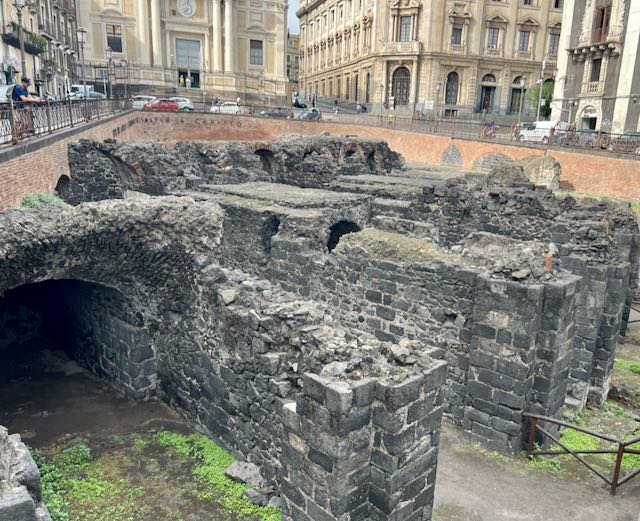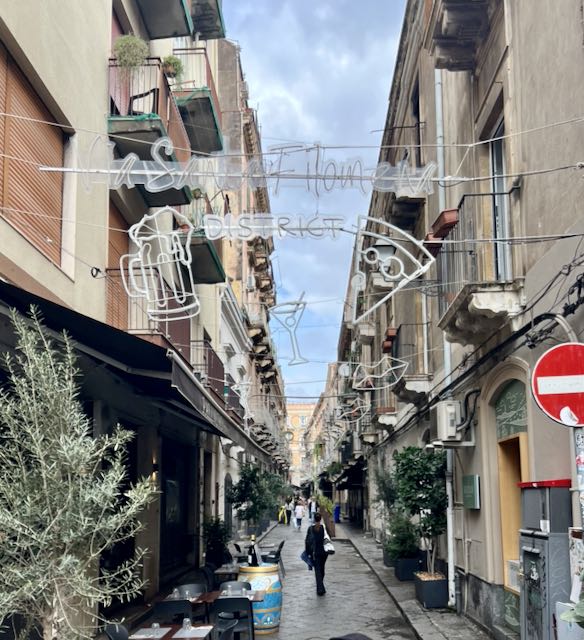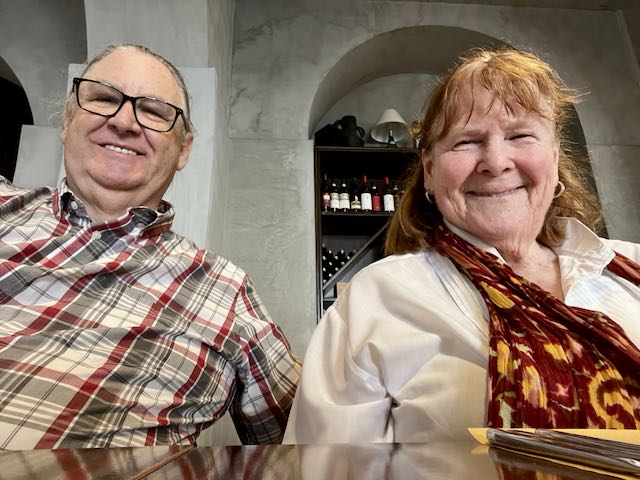Our next stop was the Island of Sicily more specifically, the port of Catania. Catania is the second-largest municipality in Sicily, after Palermo, both by area and by population. The city is located on Sicily’s east coast, facing the Ionian Sea at the base of the active volcano Mount Etna.

Founded in the 8th century BCE by Chalcidian Greeks in Magna Graecia, the city has weathered multiple geologic catastrophes: it was almost completely destroyed by a catastrophic earthquake in 1169. A major eruption and lava flow from nearby Mount Etna nearly swamped the city in 1669 and it suffered severe devastation from the 1693 Sicily earthquake.

During the 14th century, and into the Renaissance period, Catania was one of Italy’s most important cultural, artistic and political centers. It was the site of Sicily’s first university, founded in 1434.



The central “old town” of Catania features exuberant late-baroque architecture, prompted after the 1693 earthquake, and is a UNESCO World Heritage Site. There were also elephants, sculpted in lava rock, on soccer shirts, and at one time indigenous to the island.


Our excursion today was a Chef Led Market tour and lunch. Walking through the historic part of town, our guide gave us insights into how the city was reconstructed after the 1693 earthquake – where it was virtually obliterated, so the city started with a blank slate. As a result, the city has wide avenues, straight lines and buildings no taller than 4 stories.








Paths through the vegetable and fish markets, however, remain cobblestoned and narrow. The group was unable to pass up sweet treats of pistachio, but were whisked through persimmons, lemons, zucchini, and sardines.


Towering higher than the buildings is the music of Bellini, musician of Operas born in Catania and in the early 19th century beloved for his flowing melodies. He died in mysterious circumstances, alone and far from his Sicilian home.

Several stops along the way featured delicious treats (Sicilian arancini and cannoli) to sample. After our break, we picked up the pace and headed to our lunch spot. Ostier Vinoteca, where had lunch with wines complementing each course. Each course was authentic Sicilian dishes using only seasonal and local ingredients from the island. We enjoyed the hospitality of the vinoteca’s friendly owner and its chef.




After finishing lunch, we headed back to the ship to relax get ready for our next adventure.

Chef Eva Mulligan – she did cooking classes on board the ship too.
Don’t forget to leave a comment…
Now that I’m strictly on the Mediterranean diet, this market would have been a playground for me! Great to see you both really enjoying the travels, as you should be.
Be well!
Looks like you had a great day!
Love Sicily! Hope you tried some Nero d’Avola.
The history of Catania is certainly interesting, The island being able to bounce back after several atrocities is amazing. Janeen looks wonderful.
Sounds like a great day!
I had a work related assignment to visit a power plant near Palmero. Our eating out was always ended with complementary Limocello. One day we went to see if we could find any “Godfather” looking people. Finally decided the technician assisting me was the most “mobster” looking. He was from West Virginia.